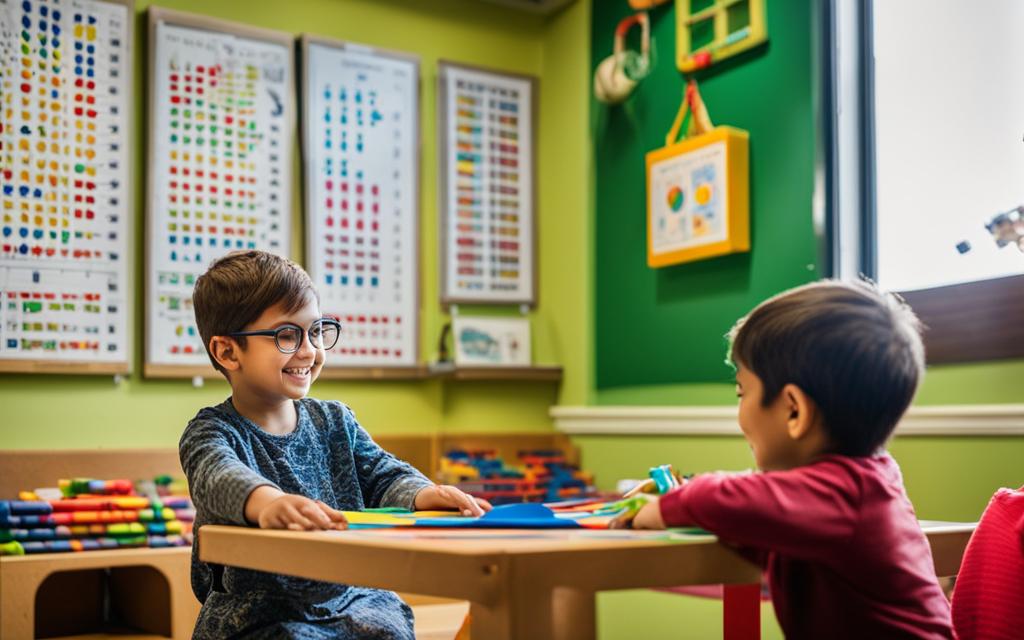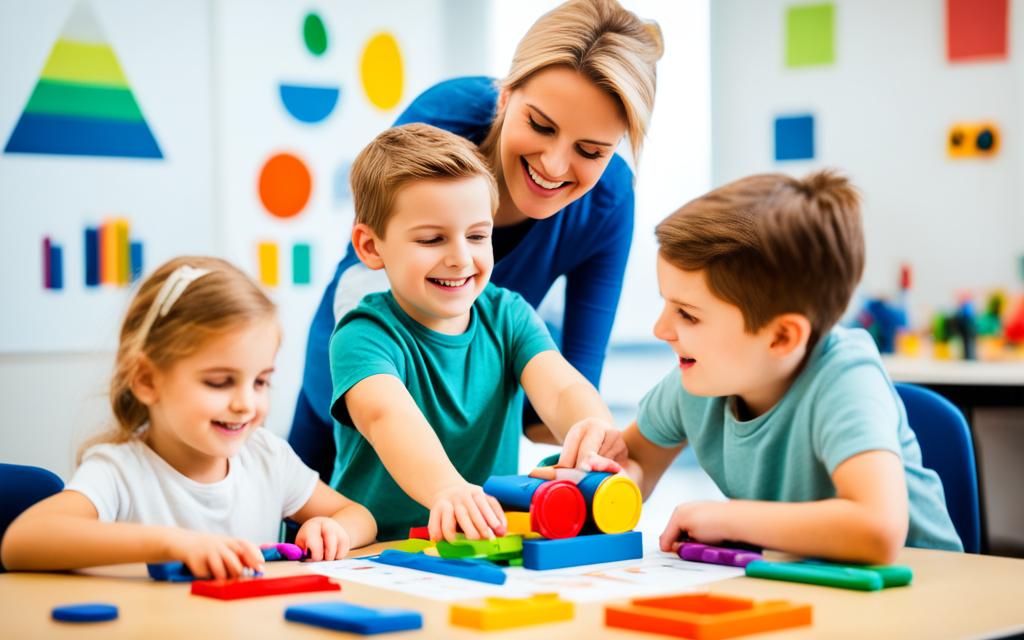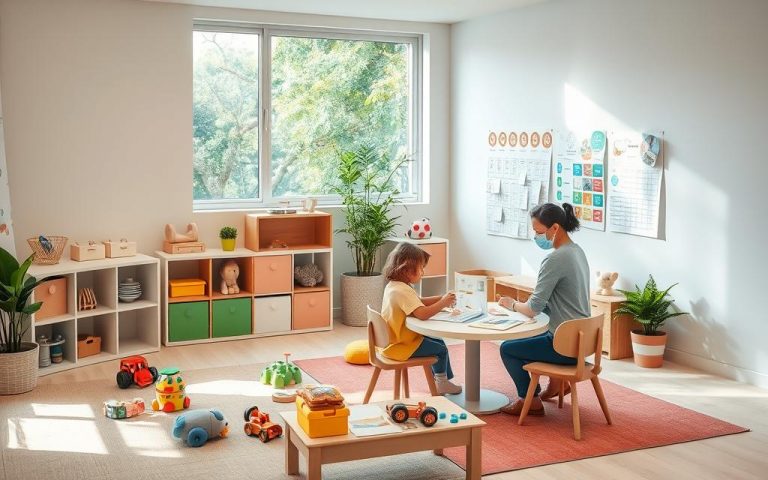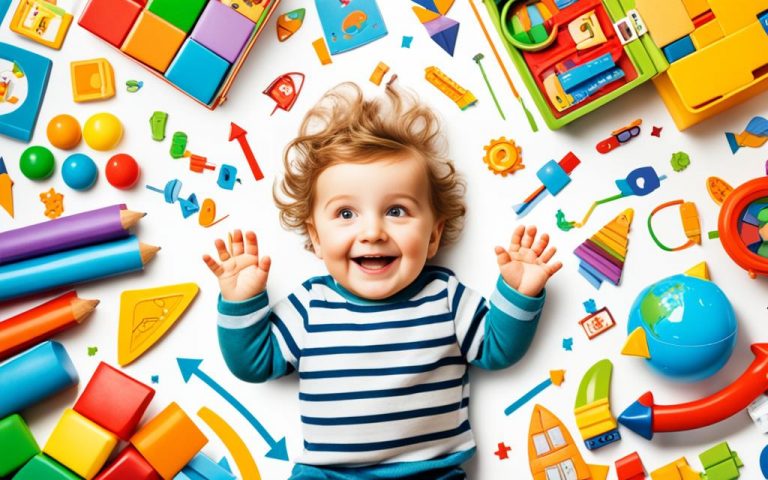Vision Therapy for Special Needs Children
As a carer for a child with special educational needs, you’re likely to be acquainted with the unique challenges they face daily. One area that might not be as apparent is their visual development, a crucial element that can significantly affect their learning and interaction with the world. Vision therapy for children with special educational needs is a bespoke approach to optometric treatments, designed to enhance the visual abilities of neurodiverse children. Tailored visual therapy programs align with the specific needs of these children, enabling them to process visual information more effectively, which plays a pivotal role in their education and well-being.
Far from being a one-size-fits-all solution, these optometric treatments for special needs children appreciate the individuality of each child’s visual profile. Effective therapy necessitates a thorough understanding of each child’s unique requirements and may include activities geared towards improving eye movement, focusing, and coordination—the basic tenets for a healthy visual system. With professional guidance and a personalised plan, vision therapy can pave the way for a child’s improved academic performance and overall quality of life.
Key Takeaways
- Vision therapy addresses individual visual challenges faced by special needs children.
- Specialised visual therapy programs are tailored for the unique needs of neurodiverse children.
- Optometric treatments can significantly enhance learning and daily functioning.
- Personalised activities are used to improve essential visual skills such as focusing and tracking.
- Professional supervision ensures that vision therapy is safely and effectively implemented.
- Improved visual skills can lead to better academic performance and quality of life.
Understanding Vision Therapy for Children with Special Educational Needs
For children with special educational needs, the world of learning can be scattered with challenges, many of which are rooted in visual processing difficulties. These hurdles often remain invisible to the naked eye, but significantly impact a child’s ability to engage with their educational environment. Catering to this need, paediatric optometry services offer a beacon of hope through personalised vision therapy programs.
Your understanding of the principles behind vision therapy is crucial if your child demonstrates signs of struggle in learning scenarios. These individualised programs, meticulously designed and overseen by professional optometrists, target the core of visual-motor and perceptual-cognitive deficiencies. Through exercises and specialised strategies, vision therapy can decode and address the complexities of visual processing difficulties in children.
For example, non-invasive eye exercises for kids with learning disabilities can substantially amend issues related to tracking, focusing, and visual perception, enabling children to navigate academic terrains with increased confidence. While the concept might seem arcane, the outcomes speak volumes in terms of improved educational experiences.
| Visual Skill | Common Challenges | Examples of Vision Therapy Exercises |
|---|---|---|
| Eye Tracking | Difficulty following a line of text | Pencil tracking exercises to improve reading fluency |
| Focusing | Problems with rapidly shifting focus between distant and near objects | Accommodation exercises like ‘Near-Far Focus Shift’ |
| Visual Processing | Challenges with understanding and recalling visual information | Memory games and sequencing activities |
By intertwining these exercises within a child’s routine, parents and educators can help foster new avenues for cognitive and visual development. It’s the intricate work of vision therapy that customises these activities, ensuring that they’re not only accessible but also engaging and effective for each child’s distinct learning profile.
“Vision therapy is not simply about strengthening the eyes; it is about developing and enhancing neural pathways that lead to a more efficient visual system,” states an eminent optometrist. This quote succinctly encapsulates the transformative potential of vision therapy in academia and beyond.
Your proactive stance in advocating for your child’s visual health can establish a strong foundation for their academic success. Discovering the benefits of paediatric optometry services might just be the turning point that illuminates the path to a brighter educational future.
Identifying Visual Processing Difficulties in Children
Understanding the signs of visual processing difficulties is essential in ensuring children receive appropriate support. These difficulties can be subtle and often overlooked, yet they significantly impact a child’s educational development. Expertise in developmental vision assessments and improving visual skills in special education is vital for early intervention.
Signs of Visual Challenges in the Classroom
Children with visual processing issues may exhibit a range of signs within the educational environment. These challenges can manifest as avoided or slow reading, difficulties with copying from the board, or a general disinterest in activities involving visual engagement. Educators and support staff should remain vigilant for these indicators to provide timely intervention.
- Frequent loss of place while reading
- Reversing letters or words after the early years of developing literacy skills
- Confusing similar-looking letters or numbers
- Poor handwriting skills or trouble staying within lines
- Short attention spans during visual tasks
These signs do not necessarily mean a child has visual processing difficulties, but they certainly warrant further exploration through a developmental vision assessment.
Role of Parents and Educators in Recognising Symptoms
Parents and educators are often the first to notice a child’s struggle with visual tasks. Acknowledging these difficulties can guide in seeking specialised assessments and support. The relationship between these observations and professional evaluation is key to improving visual skills in special education.
| Indicator | Classroom Observation | Actions for Support |
|---|---|---|
| Difficulty Copying Text | Child takes longer than peers to copy, with numerous errors | Discuss with school SENCO; consider referral for vision assessment |
| Poor Eye Tracking | Frequent skipping of words or lines while reading | Monitor reading activities; suggest vision therapy exercises |
| Short Attention Span | Child is easily distracted during tasks requiring visual focus | Use engaging, multi-sensory learning materials; evaluate for potential visual issues |
| Hand-Eye Coordination | Challenges in sports or fine motor activities | Encourage activities that develop coordination; seek professional advice if necessary |
Remember, involvement and communication between parents, educators, and eye care professionals are pivotal in improving visual skills in special education. By working together, we can pave the way for enhanced learning and overall success for the child affected by visual processing challenges.
Exploring Paediatric Optometry Services
When it comes to paediatric optometry services, the importance of specialised eye care for children, particularly those experiencing visual processing difficulties, cannot be overstated. The identification and management of visual challenges are crucial components of supporting a child’s development, learning, and overall well-being.
The Importance of Specialised Paediatric Eye Care
Children are not simply small adults; their visual systems are complex and continue to develop throughout early childhood. This necessitates a paediatric optometrist’s expertise to assess, diagnose, and treat any conditions effectively. Developmental vision assessments are an integral part of this process, ensuring that visual issues are addressed promptly and accurately. Specialised paediatric eye care is uniquely positioned to cater for the nuanced needs of children with visual processing difficulties, enabling a tailored approach to treatment that fosters optimal visual health and functionality.
Finding the Right Optometrist for Your Child
Choosing an optometrist for your child requires careful consideration. It’s not just about finding someone who is qualified, but also someone who understands the distinctive challenges faced by children with visual processing difficulties. You are advised to seek recommendations from professionals such as paediatricians or other parents, consider the optometrist’s qualification in paediatric optometry services, and evaluate the range of services offered, from developmental vision assessments to therapy tailored to children’s needs.
Your child deserves the best possible support to overcome any visual barriers to learning and development. Settling for the first paediatric optometry service you come across may not always result in the most beneficial outcomes for your child’s unique situation. Find an optometrist who exhibits patience, understanding, and a proactive approach to managing and treating visual processing difficulties in children, ensuring your child’s vision care is in capable hands.
Comprehensive Developmental Vision Assessments Explained
When considering vision therapy for children with special educational needs, understanding the foundational step of a comprehensive developmental vision assessment is crucial. This meticulous process is employed by paediatric optometrists to identify any visual processing difficulties in children and tailor therapy to their precise requirements.
The assessment typically begins with an in-depth review of the child’s medical history, followed by a series of tests designed to evaluate both the mechanical and perceptual aspects of vision. Here is a step-by-step guide to what you, as a parent or caregiver, can anticipate during this pivotal evaluation.
| Assessment Stage | Tools & Methods Used | Focus of Evaluation |
|---|---|---|
| Medical History Review | Interviews, Questionnaires | Previous ocular conditions, developmental milestones |
| Visual Acuity Testing | Snellen Chart, LEA Symbols | Clarity and sharpness of sight |
| Refraction Assessment | Phoropter, Retinoscope | Prescription for corrective lenses |
| Binocular Vision Exams | Stereopsis Tests, Cover Test | Eye alignment and coordination |
| Visual Processing Screening | Visual-Motor Integration Tests | How vision is interpreted and understood by the brain |
Understanding the specifics of your child’s visual function allows optometrists to shape effective vision therapy plans, which are critical in overcoming learning barriers caused by visual impairments. After all, each child deserves an educational experience tailored to their unique needs, helping them to reach their full potential.
Through comprehensive developmental vision assessments, we can discover the hidden strengths and challenges within a child’s visual system, devising strategies that truly make a difference in their learning journey. – A paediatric optometry specialist
- Evaluation is tailored to your child’s developmental level
- Therapy plans are customised based on assessment outcomes
- Regular reassessments ensure therapy remains effective
Remember, early detection and treatment of visual issues can profoundly affect your child’s educational and personal development. If you suspect any visual processing challenges, do not hesitate to seek out a comprehensive developmental vision assessment.
Eye Exercises for Kids with Learning Disabilities
In special education, the focus on improving visual skills is paramount, particularly for children who face learning disabilities. Engaging in targeted eye exercises can substantially aid in enhancing their ability to process visual information, which is essential for everyday tasks such as reading and writing. Here’s an overview of exercises designed to strengthen visual acumen in young learners.
Vision therapy experts suggest a variety of exercises which can be seamlessly incorporated into both school and home environments. Let’s examine a few practical examples:
- Tracking exercises: These encourage the eyes to move smoothly across a page, which is crucial for reading efficiency.
- Focus change drills: These challenge the eyes to swiftly change focus from near to far objects, enhancing overall eye flexibility.
- Visual sequencing: This involves identifying patterns and sequences, facilitating the improvement of visual memory and the ability to decipher information quickly.
Practising these exercises consistently can lead to noticeable improvements in a child’s visual skills, as documented in a number of case studies. Regularly performed, these activities aid in developing a sharper visual acuity and better eye coordination, factors that are vital in academic success and everyday learning scenarios.
Children with learning disabilities often find visual tasks to be challenging. But with persistent practice of eye exercises, many exhibit significant progress, both in their academic pursuits and in their day-to-day visual tasks.
For a structured approach, here’s a table with eye exercises that experts commonly recommend for children:
| Exercise | Description | Benefit |
|---|---|---|
| Balloon Tracking | Following the movement of a balloon with the eyes as it floats through the air. | Enhances tracking ability and peripheral vision. |
| Figure Eight | Tracing an imaginary figure eight with the eyes, first in one direction, then the other. | Improves eye muscle flexibility and control. |
| Near and Far Focus | Shifting focus between a near object and a distant one repeatedly. | Develops the ability to adjust focus quickly. |
These eye exercises for kids with learning disabilities have been shown to yield positive outcomes in improving visual skills in special education. Encouraging your child to practice regularly can be instrumental in their visual and educational development.
Optometric Treatments for Special Needs Children
Delivering tailored healthcare is paramount for children with special educational needs, particularly in the realm of vision therapy. In determining the appropriate optometric treatments, specialists must carefully consider each child’s unique visual requirements, ensuring a highly customised approach to fostering better sight and processing abilities.
Customised Vision Therapy Programs
Vision therapy for children with special educational needs is not a one-size-fits-all remedy. It involves the careful crafting of customised vision therapy programs that address individual challenges. These tailored programs employ a variety of exercises designed to correct or improve specific areas of vision deficits, such as focusing, eye tracking, and coordination. The key to success lies in personalisation. Just as no two children are alike, each therapy program is nuanced, catering to the strengths and weaknesses of the child in question.
Integrating Optometric Therapy with Other Interventions
For a comprehensive approach, integrating optometric treatments with other educational and therapeutic interventions is crucial. Experts suggest that by combining vision therapy with other supports, such as occupational therapy or speech and language therapy, children can make more substantial progress. The collaborative approach aims not only to enhance visual skills but also to support overall developmental gains.
| Optometric Treatment | Benefits | Integration with Other Interventions |
|---|---|---|
| Corrective Lenses | Improves clarity of vision, enhances focus, reduces visual stress. | Complements physiotherapy by aiding in spatial awareness. |
| Vision Therapy | Strengthens eye coordination, increases visual processing speed. | Augments educational support by improving reading and writing tasks. |
| Prism Lenses | Assists with proper eye alignment, improves balance and posture. | Works in conjunction with occupational therapy to enhance motor skills. |
Your child’s journey towards improved vision should ideally be a holistic one, intertwining various therapies that address their complete developmental needs. With guidance from experienced paediatric optometrists, your child can receive effective, customised care through optometric treatments, setting them on a path to greater visual and overall achievements.
Improving Visual Skills in Special Education
As you delve into the realms of special education, you recognise the instrumental role of visual skills in the learning process. Improving visual skills in special education not only enhances academic performance but also fundamentally supports the overall development and well-being of children. Notably, vision therapy for children with special educational needs has been acknowledged as a valuable approach in this context.
Vision therapy is more than just eye exercises; it’s a progressive program of treatment strategies aimed at improving eye coordination, visual perception, and the ability to process visual information. These skills are crucial for effective learning, particularly for children who require special education services.
Thanks to vision therapy, children with special educational needs have shown remarkable improvements in reading fluency, hand-eye coordination, and attention, which underspin their learning journey.
- A pilot study on vision therapy’s impact on children with learning disabilities reported improvements in reading and writing abilities within just a few months.
- Case reports indicate enhanced classroom participation and confidence developed through regular vision therapy sessions.
- Visual perceptual skills sharpened through targeted exercises have also been linked to better comprehension and retention of academic subjects.
These successes exemplify the transformative effect that vision therapy can have on a child’s education and quality of life. Experts continually advocate for its incorporation into special educational curriculums to capitalise on these benefits.
However, to better appreciate these successes, kindly consider the following table that summarises the Advantages of Vision Therapy in Special Education:
| Advantage | Description | Impact on Learning |
|---|---|---|
| Enhanced Eye Coordination | Improved ability to track and align eyes accurately, vital for reading and writing tasks. | Fewer errors and increased reading speed and comprehension |
| Increased Visual Perception | Growth in recognising and interpreting visual information, which is essential for learning new material. | Better understanding and recall of visual information, such as charts and graphs |
| Improved Visual Processing | Greater efficiency in managing visual inputs, resulting in improved attention and focus. | Lengthier concentration spans and ability to complete complex visual tasks |
Long-term advantages of vision therapy, substantiated by specialist analyses, include sustained academic success and heightened life experiences. These enduring benefits exert a profound influence, shaping a future where visual impairments no longer hold back children in special education from reaching their full potential.
In closing, when contemplating the critical need for improving visual skills in special education, one should also observe the dedicated professionals and customised treatments that make such enhancement possible. Vision therapy, a testament to these efforts, ensures that every child is equipped with the visual tools necessary to navigate an educational landscape rich with opportunity and discovery.
Visual Therapy Programs for Neurodiverse Children
Recognising the unique visual and perceptual needs of neurodiverse children, visual therapy programs have become a cornerstone in paediatric optometry services. These tailored programs have been demonstrated through numerous case studies to significantly enhance the visual capabilities of children, enabling them to engage with their environment more effectively.
Paediatric optometrists provide keen insights on customising visual therapy to suit the varied sensory experiences of neurodiverse children. The adaptation of visual therapy programs to meet children’s individual needs makes these services invaluable. The nurturing environment of a therapy session allows children to progress at their own pace, with the support of specialised therapeutic activities and exercises.
As you explore the world of visual therapy, you’ll encounter the narratives of children who have faced and overcome challenges with the aid of structured, compassionate support. The breakthroughs made in visual therapy sessions are not just clinical triumphs; they are deeply personal achievements that touch the lives of children and their families.

The journey through visual therapy is replete with stories of achievements. One such narrative involves a child who, after engaging with a bespoke visual therapy regimen, showed marked improvement in both academic performance and social interactions. The shared experiences of therapists and parents alike underscore the pivotal role visual therapy plays in the development of neurodiverse children.
While exploring the benefits of visual therapy programs for neurodiverse children, consider the following advantages:
- Enhanced visual processing and cognitive skills
- Improved hand-eye coordination
- Better focus and attention in academic settings
- Increased confidence and social engagement
Through the dedicated efforts of paediatric optometrists, neurodiverse children have access to therapeutic interventions that not only improve their vision but also enrich their overall quality of life. Embrace the prospect of these transformative experiences and witness the potential of tailored visual therapy programs to make a profound difference.
How Effective Is Vision Therapy?
As you delve into the realm of vision therapy for children with special educational needs, you might question the tangible outcomes such an intervention might have. The efficacy of this therapeutic approach is supported not only by an array of compelling success stories from those at the front lines—parents and educators—but also by a growing body of research that solidifies its legitimacy within paediatric optometry.
Success Stories and Testimonials
An inspiring compilation of anecdotes from families and teachers provides a heartening snapshot of the profound changes vision therapy has catalysed in the lives of children. These testimonials often highlight remarkable improvements in academic performances, social interactions, and overall confidence, particularly emphasising how optometric treatments have tailored to the specific requirements of special needs children, fostering a positive impact that extends far beyond the classroom.
Research and Evidence Supporting Vision Therapy
When considering research and evidence supporting vision therapy, recent scientific studies make a compelling case for its effectiveness. These investigations shed light on the intricate link between tailored vision therapy programmes and marked advancements in visual processing capabilities. With insights from esteemed paediatric optometrists, one can appreciate the substantiated benefits of such treatments, reinforcing vision therapy’s critical role in enhancing not just visual function but also the quality of life for these children.
FAQ
What is vision therapy and how can it help children with special educational needs?
Vision therapy is a sequence of specialised activities and exercises designed to enhance visual functioning and efficiency. It’s particularly beneficial for children with special educational needs, as it helps improve skills such as tracking, focusing, and visual perception that are critical for learning and everyday tasks.
Can vision therapy address visual processing difficulties?
Yes, vision therapy is tailored to address visual-motor and perceptual-cognitive deficiencies. Through an assortment of eye exercises, children with learning disabilities can overcome challenges that affect their ability to learn effectively.
What signs should I look for to identify visual processing issues in my child?
Look for difficulties with reading and writing, hand-eye coordination, and maintaining attention on visual tasks. Children might also frequently lose their place while reading or exhibit discomfort in visually-oriented activities.
Why is specialised paediatric eye care important?
Specialised paediatric eye care is critical for the early detection and proper management of visual processing difficulties. Paediatric optometrists have the expertise to identify and treat these specific challenges, ensuring that visual problems do not hinder a child’s educational development.
What does a comprehensive developmental vision assessment involve?
This thorough evaluation includes a variety of tests and methods to assess a child’s visual processing abilities, such as their capability to track moving objects, focus clearly at different distances, and interpret visual information. This assessment is crucial for creating an effective vision therapy plan.
How do eye exercises benefit kids with learning disabilities?
Eye exercises are designed to strengthen the visual skills needed for tasks like reading and writing. For children with learning disabilities, these exercises can lead to improvements in attention, information processing, and academic performance.
What are some examples of optometric treatments for special needs children?
Optometric treatments for special needs children may include customised vision therapy programs to target the child’s specific visual needs, the use of corrective lenses, and other interventions. These treatments can be integrated with additional support such as occupational or physiotherapy.
What improvements can be seen in special education from enhanced visual skills?
Enhancing visual skills can lead to better reading comprehension, writing abilities, and overall classroom learning. Improved visual processing can also lift the general quality of life for children with special educational needs by making everyday visual tasks easier.
How are visual therapy programs adapted for neurodiverse children?
Visual therapy programs for neurodiverse children are customised based on each child’s unique strengths and challenges. Careful considerations are made to accommodate sensitivities and to ensure that the therapy remains effective and engaging for each individual child.
What evidence supports the effectiveness of vision therapy?
A growing body of research demonstrates that vision therapy can significantly improve visual functions, which can translate to improved academic and behavioural outcomes. Success stories and testimonials from parents and educators also support the positive impacts of these treatments.







